
American Museum of Natural History—New work on the skeletal remains of scarlet macaws found in an ancient Pueblo settlement indicates that social and political hierarchies may have emerged in the American Southwest earlier than previously thought. Researchers determined that the macaws, whose brilliant red and blue feathers are highly prized in Pueblo culture, were persistently traded hundreds of miles north from Mesoamerica starting in the early 10th century, at least 150 years before the origin of hierarchy is usually attributed. The findings, published today in the Proceedings of the National Academy of Sciences, suggest that the acquisition and control of macaws, along with other valued items like chocolate and turquoise, may have facilitated the development of hierarchy in the society.
“By directly dating the macaws, we have demonstrated the existence of long-distance networks throughout much of this settlement’s history,” said Adam Watson, a postdoctoral fellow in the American Museum of Natural History’s Division of Anthropology and lead author on the paper. “Our findings suggest that rather than the acquisition of macaws being a side effect of the rise of Chacoan society, there was a causal relationship. The ability to access these trade networks and the ritual power associated with macaws and their feathers may have been important to forming these hierarchies in the first place.”
Archaeologists have known for more than a century that the pre-Hispanic Pueblo people of the American Southwest acquired goods from Mesoamerica, including marine shells from the Gulf of California, raw copper and crafted copper bells from west Mexico, cacao from the Neotropics, and tropical birds. Scarlet macaws (Ara macao) have been recovered from many settlements in the Southwest, particularly at Chaco Canyon in northwestern New Mexico, a major cultural center that was densely occupied between about AD 800 and 1200 and had more than a dozen multi-storied “great houses.” The birds are native to humid forests in tropical America–primarily the Gulf Coast region of Mexico, Central America, and northern sections of South America–so their presence at Chaco Canyon indicates the existence of long-distance procurement networks often characteristic of a complex society. It was traditionally thought that the Pueblo people did not bring these items back to the settlement until AD 1040, the start of an era of rapid architectural expansion called the Chaco florescence.
But new radiocarbon dating of artifacts discovered in the settlement is changing that view.
___________________________________________
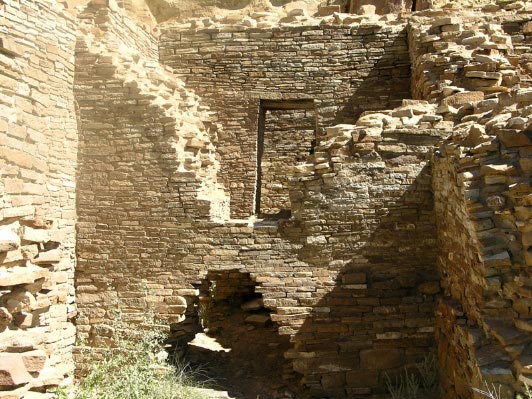 An interior view of Wijiji, a ruin at the southern end of Chaco Canyon (New Mexico, United States). Troy Cline, Wikimedia Commons
An interior view of Wijiji, a ruin at the southern end of Chaco Canyon (New Mexico, United States). Troy Cline, Wikimedia Commons
___________________________________________________________
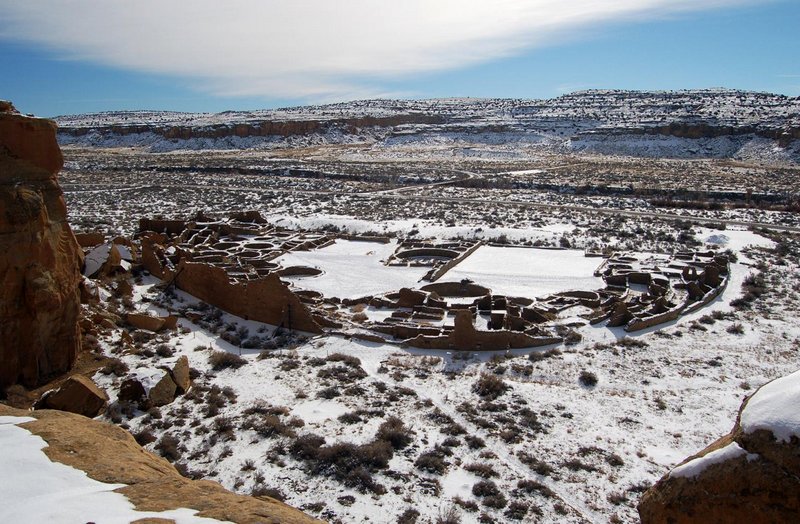 This photo shows a modern view of Pueblo Bonito, the largest of the ‘great houses’ in the pre-Hispanic cultural center of Chaco Canyon, which was occupied between about AD 900 and 1500. Pueblo Bonito had about 650 rooms. Courtesy AMNH/A. Watson
This photo shows a modern view of Pueblo Bonito, the largest of the ‘great houses’ in the pre-Hispanic cultural center of Chaco Canyon, which was occupied between about AD 900 and 1500. Pueblo Bonito had about 650 rooms. Courtesy AMNH/A. Watson
___________________________________________________________
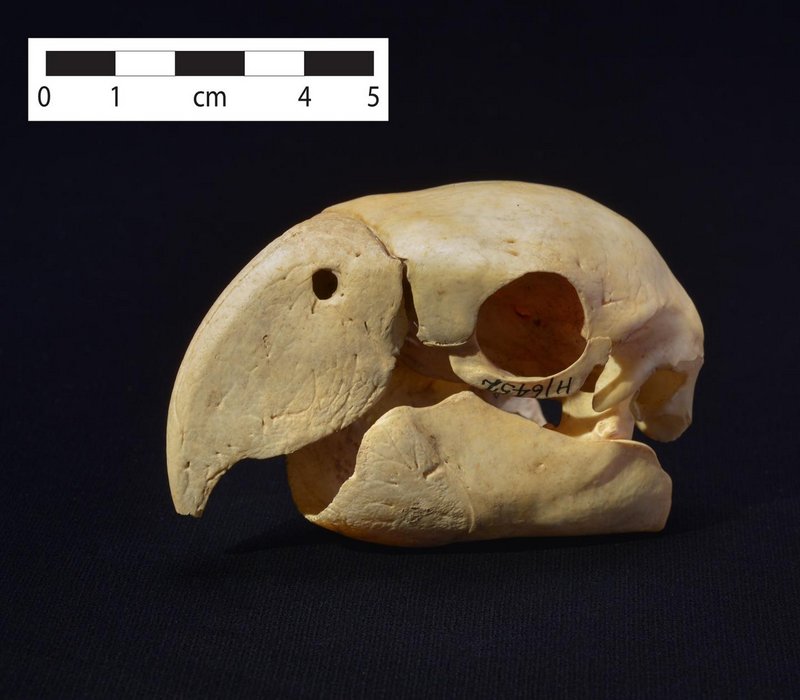 This skull of a scarlet macaw (Ara macao) was excavated from Pueblo Bonito in New Mexico by researchers from the American Museum of Natural History in 1897. Courtesy AMNH/D. Finnin
This skull of a scarlet macaw (Ara macao) was excavated from Pueblo Bonito in New Mexico by researchers from the American Museum of Natural History in 1897. Courtesy AMNH/D. Finnin
__________________________________________________________
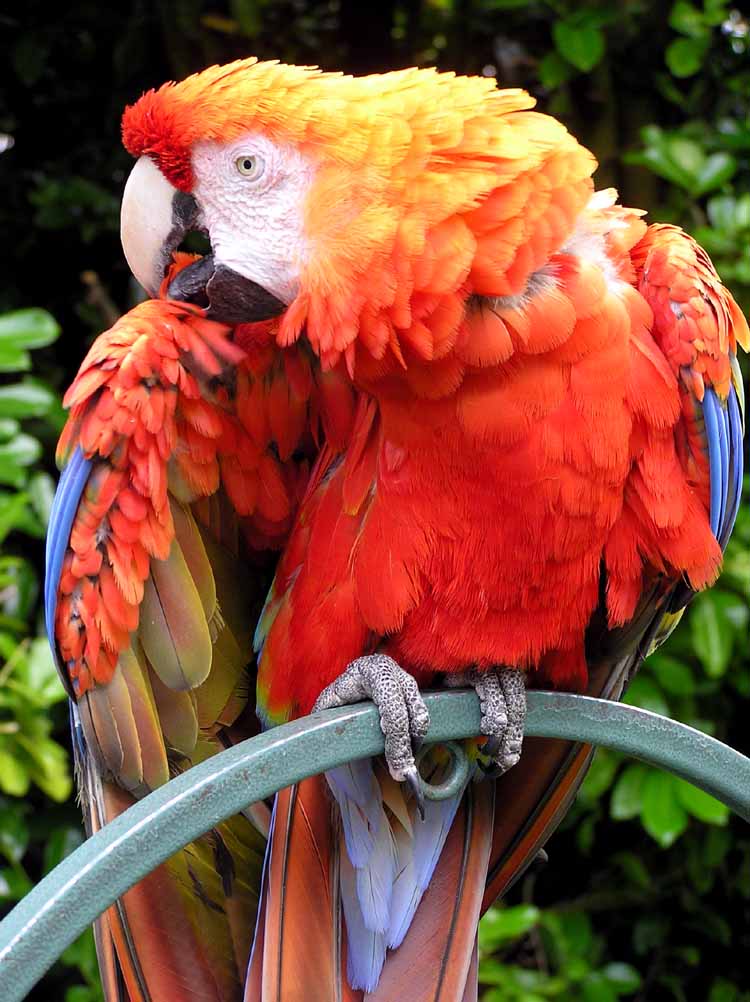 Scarlet Macaw (Ara macao) at Combe Martin Wildlife and Dinosaur Park, North Devon, England. Adrian Pingstone, Wikimedia Commons
Scarlet Macaw (Ara macao) at Combe Martin Wildlife and Dinosaur Park, North Devon, England. Adrian Pingstone, Wikimedia Commons
_______________________________________________________
First excavated by a Museum-led team in 1896, the largest of the Chaco Canyon great houses was Pueblo Bonito, which had about 650 rooms. Among those rooms was one particularly unusual crypt: Room 33, a single small structure in the oldest area of the Pueblo, that contained 14 human bodies along with significant amounts of symbolically important items like turquoise, shell, and flutes. Two of the bodies were buried below a rare wooden floor with the majority of the grave goods, signaling the special treatment of elite individuals at Pueblo Bonito.
“In general, most researchers have argued that emergence of hierarchy, and of extensive trade networks that extended into Mexico, would coincide with what we see as other aspects of the Chaco florescence: roads being built outward from Chaco and the formation of what are called Chaco outliers that mimic the architecture seen in the cultural center,” said Stephen Plog, professor of archaeology at the University of Virginia and a co-author on the paper. “For many years, that was the dominant model.”
But in 2010, radiocarbon dating led by Plog showed that the two burials happened no later than AD 775-875.
“Based on these results, which call into question when the formation of the hierarchy actually began in Chaco, we decided to take another look at the macaws,” Watson said.
Ethnographically, scarlet macaws are particularly significant in Pueblo cosmology, where based on directional association by color (red/orange), they tend to designate southern positions. Ritual use of macaw feathers on prayer sticks, costumes, and masks to communicate prayers to gods is well recorded. The acquisition and control of scarlet macaws was likely the province of social and religious elites.
“Birds are a part of nature, but they are also agents with magical properties that can be put to human use,” said Peter Whiteley, a curator in the Museum’s Division of Anthropology and a co-author on the paper. “Flight or just the appearance of certain birds or the use of their feathers is believed to motivate the fall of rain or snow, as well as the seasons, the sunshine, and the heat.”
The remains of 30 macaws have been found in Pueblo Bonito, including 14 in a single structure: Room 38, which, based on the amount of guano detected on the floor, was likely a sort of aviary. Previous attempts at indirect dating of macaw skeletons concluded that they were obtained during the Chaco florescence, but the accuracy of the methods used, based on associated tree rings and ceramic type frequencies, is questionable. With radiocarbon dating, the researchers examined 14 Pueblo Bonito macaw skeletons that are currently housed in the Museum’s collection.
Direct radiocarbon dating of macaw skeletons found that 12 of the 14 sampled macaws predate the Chaco florescence, with about half of them dating to the late 800s and mid-900s. The acquisition of these birds would have been a formidable task, requiring the removal of fledglings from the nest soon after their birth before traveling between 1,800 and 2,500 kilometers (about 1,120-1,550 miles) on foot back to Chaco.
“We propose that the hierarchical sociopolitical foundation of Chacoan society was established during the initial era of construction of the great houses and that this foundation was reinforced during the late ninth and 10th centuries by the acquisition of scarlet macaws and other cosmologically powerful agents from Mesoamerica,” Plog said. “Sociopolitical hierarchies evolved over the course of nearly two centuries before taking the more visible forms seen in the Chaco florescence. As in many parts of the world, this was a long-term process rather than a brief, abrupt transformation.”
__________________________
See also Prehistoric Macaws of the American Southwest, by Kimberly Munro, published in the April, 2011 issue of Popular Archaeology Magazine.
_________________________________________________________
A press release of the American Museum of Natural History.
Other authors of the paper include: Douglas Kennett and Brendan Culleton, The Pennsylvania State University; Patricia Gilman, University of Oklahoma; Steven LeBlanc, Harvard University; and Santiago Claramunt, American Museum of Natural History.
AMERICAN MUSEUM OF NATURAL HISTORY (AMNH.ORG)
The American Museum of Natural History, founded in 1869, is one of the world’s preeminent scientific, educational, and cultural institutions. The Museum encompasses 45 permanent exhibition halls, including the Rose Center for Earth and Space and the Hayden Planetarium, as well as galleries for temporary exhibitions. It is home to the Theodore Roosevelt Memorial, New York State’s official memorial to its 33rd governor and the nation’s 26th president, and a tribute to Roosevelt’s enduring legacy of conservation. The Museum’s five active research divisions and three cross-disciplinary centers support approximately 200 scientists, whose work draws on a world-class permanent collection of more than 33 million specimens and artifacts, as well as specialized collections for frozen tissue and genomic and astrophysical data, and one of the largest natural history libraries in the world. Through its Richard Gilder Graduate School, it is the only American museum authorized to grant the Ph.D. degree. In 2012, the Museum began offering a pilot Master of Arts in Teaching program with a specialization in Earth science, which is the only non-university affiliated such program in the United States. Annual attendance has grown to approximately 5 million, and the Museum’s exhibitions and Space Shows can be seen in venues on five continents. The Museum’s website and collection of apps for mobile devices extend its collections, exhibitions, and educational programs to millions more beyond its walls. Visit amnh.org for more information.
________________________________________________________
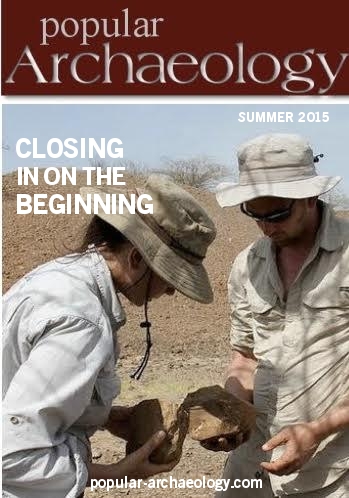 Read more in-depth articles about archaeology with a premium subscription to Popular Archaeology Magazine.
Read more in-depth articles about archaeology with a premium subscription to Popular Archaeology Magazine.
In addition, the latest Popular Archaeology ebook is now available.
______________________________________________
Travel and learn with Far Horizons.
____________________________________________
 Popular Archaeology’s annual Discovery Edition eBook is a selection of the best stories published in Popular Archaeology Magazine in past issues, with an emphasis on some of the most significant, groundbreaking, or fascinating discoveries in the fields of archaeology and paleoanthropology and related fields. At least some of the articles have been updated or revised specifically for the Discovery edition. We can confidently say that there is no other single issue of an archaeology-related magazine, paper print or online, that contains as much major feature article content as this one. The latest issue, volume 2, has just been released. Go to the Discovery edition page for more information.
Popular Archaeology’s annual Discovery Edition eBook is a selection of the best stories published in Popular Archaeology Magazine in past issues, with an emphasis on some of the most significant, groundbreaking, or fascinating discoveries in the fields of archaeology and paleoanthropology and related fields. At least some of the articles have been updated or revised specifically for the Discovery edition. We can confidently say that there is no other single issue of an archaeology-related magazine, paper print or online, that contains as much major feature article content as this one. The latest issue, volume 2, has just been released. Go to the Discovery edition page for more information.
____________________________________________







